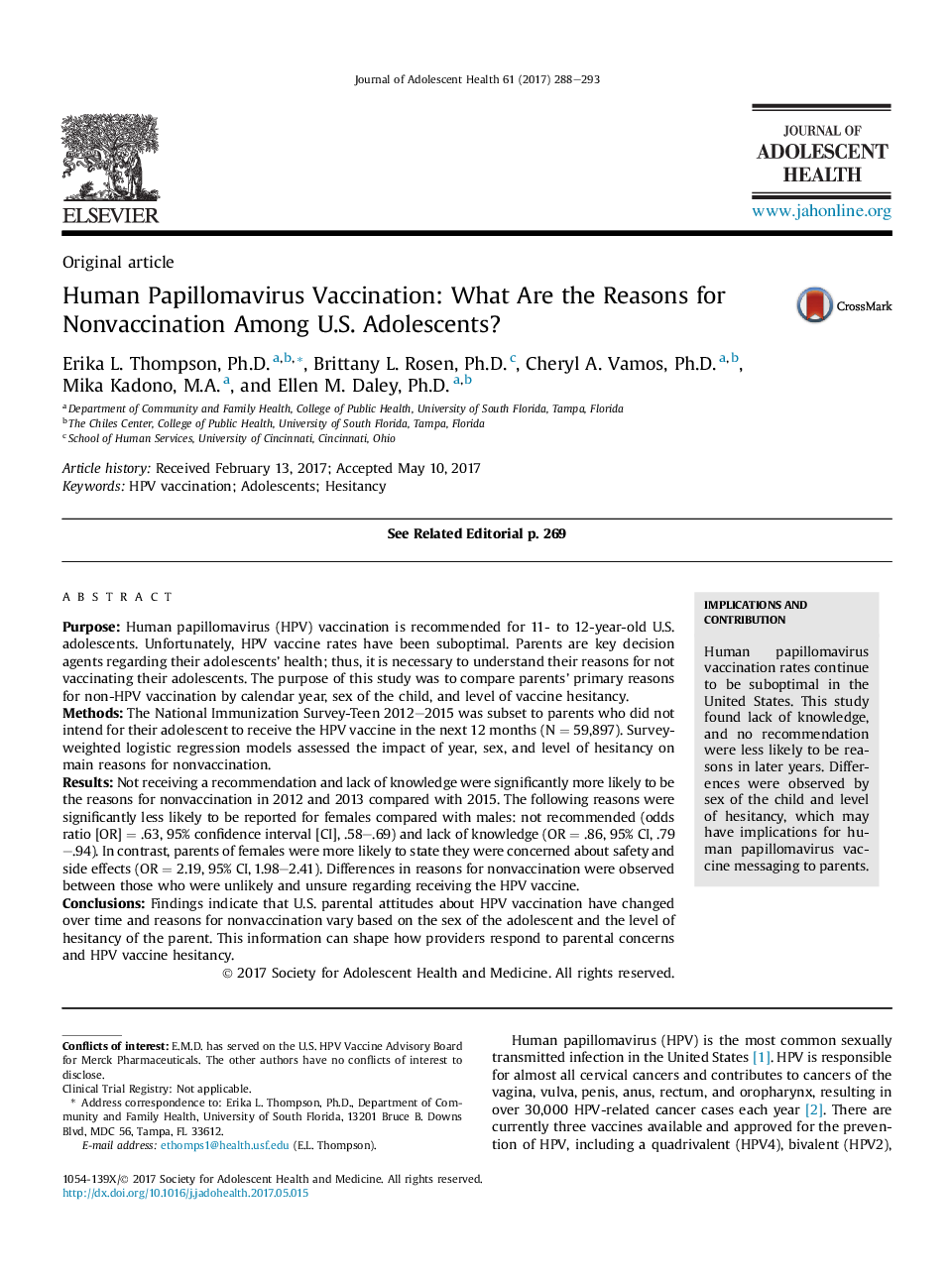| Article ID | Journal | Published Year | Pages | File Type |
|---|---|---|---|---|
| 5121241 | Journal of Adolescent Health | 2017 | 6 Pages |
PurposeHuman papillomavirus (HPV) vaccination is recommended for 11- to 12-year-old U.S. adolescents. Unfortunately, HPV vaccine rates have been suboptimal. Parents are key decision agents regarding their adolescents' health; thus, it is necessary to understand their reasons for not vaccinating their adolescents. The purpose of this study was to compare parents' primary reasons for non-HPV vaccination by calendar year, sex of the child, and level of vaccine hesitancy.MethodsThe National Immunization Survey-Teen 2012-2015 was subset to parents who did not intend for their adolescent to receive the HPV vaccine in the next 12Â months (NÂ = 59,897). Survey-weighted logistic regression models assessed the impact of year, sex, and level of hesitancy on main reasons for nonvaccination.ResultsNot receiving a recommendation and lack of knowledge were significantly more likely to be the reasons for nonvaccination in 2012 and 2013 compared with 2015. The following reasons were significantly less likely to be reported for females compared with males: not recommended (odds ratio [OR]Â = .63, 95% confidence interval [CI], .58-.69) and lack of knowledge (ORÂ = .86, 95%Â CI, .79-.94). In contrast, parents of females were more likely to state they were concerned about safety and side effects (ORÂ = 2.19, 95% CI, 1.98-2.41). Differences in reasons for nonvaccination were observed between those who were unlikely and unsure regarding receiving the HPV vaccine.ConclusionsFindings indicate that U.S. parental attitudes about HPV vaccination have changed over time and reasons for nonvaccination vary based on the sex of the adolescent and the level of hesitancy of the parent. This information can shape how providers respond to parental concerns and HPV vaccine hesitancy.
